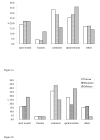The regional differences in prevalence, medical expenditures and risk factors for injury in Taiwanese teenagers
- PMID: 16638154
- PMCID: PMC1539003
- DOI: 10.1186/1471-2458-6-107
The regional differences in prevalence, medical expenditures and risk factors for injury in Taiwanese teenagers
Abstract
Background: Injury is the leading cause of death in teenagers worldwide. In Taiwan, people in mountainous areas have a 4 to 8 years shorter life span than the general population. Injury among teenagers is likely a major cause. The objective of this study was to investigate the regional differences in the prevalence, the risk factors, and the medical expenditures for injury among Taiwanese teenagers.
Method: An equal probability national sample was used. In addition, representative samples from mountainous areas and offshore islands were used. Only those who aged between 12 and 21 years, and signed the consent form permitting us to link their National Health Insurance (NHI) claim data were included in the analysis. Injury-related visits and expenditures in outpatient services were extracted from the NHI data. Logistic regression was used to examine the factors associated with injury. For those who had injury related outpatient visits, mixed model was used to examine the factors associated with medical expenditures accounting for multiple visits by the same individual.
Results: The prevalence of nonfatal injury was around 30% of teenagers in Taiwan. It was 10% higher in mountainous areas. Factors associated with injury were those who lived in mountainous areas (adjusted odds ratio [OR]: 1.7; 95%; confidence interval [CI]: 1.3-2.3), males (OR: 1.3; 95%; CI: 1.1-1.6), older teens (18-21 years old), and those with risk behavior were positively associated with injury. These factors were also associated with the number of injury-related outpatient visits. However, teenagers in mountainous areas did not spend more on medical care than those who lived in metropolitan Taiwan.
Conclusion: Around 30% of the teenagers were injured in a year, not including the dead. Each of the injured spent at least 851.4NTD (approximately 27USD) for outpatient visits. The scope of the problem was not trivial. Hazardous environments and high-risk behaviors were the universal causes. In remote areas, lack of medical resources was another possibility. Empowering local people to design prevention programs according to their needs is recommended.
Figures
Similar articles
-
Estimating annual medical and out-of-pocket expenditures associated with traumatic injuries in the United States.J Trauma Acute Care Surg. 2016 Feb;80(2):258-64. doi: 10.1097/TA.0000000000000910. J Trauma Acute Care Surg. 2016. PMID: 26517784
-
Household out-of-pocket medical expenditures and National Health Insurance in Taiwan: income and regional inequality.BMC Health Serv Res. 2005 Sep 2;5:60. doi: 10.1186/1472-6963-5-60. BMC Health Serv Res. 2005. PMID: 16137336 Free PMC article.
-
Annual report on health care for children and youth in the United States: focus on injury-related emergency department utilization and expenditures.Ambul Pediatr. 2008 Jul-Aug;8(4):219-240.e17. doi: 10.1016/j.ambp.2008.03.032. Epub 2008 May 27. Ambul Pediatr. 2008. PMID: 18644545
-
Incidence, risk factors and economic burden of fall-related injuries in older Chinese people: a systematic review.Inj Prev. 2019 Feb;25(1):4-12. doi: 10.1136/injuryprev-2018-042982. Inj Prev. 2019. PMID: 30670560
-
Expenditures for unintentional injuries among the elderly.J Aging Health. 1990 May;2(2):157-78. doi: 10.1177/089826439000200202. J Aging Health. 1990. PMID: 10113175 Review.
Cited by
-
Rider factors associated with severe injury after a light motorcycle crash: A multicentre study in an emerging economy setting.PLoS One. 2019 Jun 28;14(6):e0219132. doi: 10.1371/journal.pone.0219132. eCollection 2019. PLoS One. 2019. PMID: 31251789 Free PMC article.
References
-
- Peden MMK, Sharma G. The injury chart book: a graphical overview of the global burden of injuries. Geneva: World Health Organization; 2002.
-
- Merrick J, Kandel I, Birnbaum L, Hyam E, Press J, Morad M. Adolescent injury risk behavior. Int J Adolesc Med Health . 2004;16:207–213. - PubMed
-
- Yang GH, Zhou MG, Huang ZJ, Wang LJ. Study on the trend and disease burden of injury deaths in Chinese population, 1991 – 2000. Zhonghua Liu Xing Bing Xue Za Zhi. 2004;25:193–198. - PubMed
-
- Reimers A, Laflamme L. Neighborhood social composition and injury risks among pre-adolescent and adolescent boys and girls. A study in Stockholm metropolitan. Int J Adolesc Med Health. 2004;16:215–227. - PubMed
Publication types
MeSH terms
LinkOut - more resources
Full Text Sources
Medical


